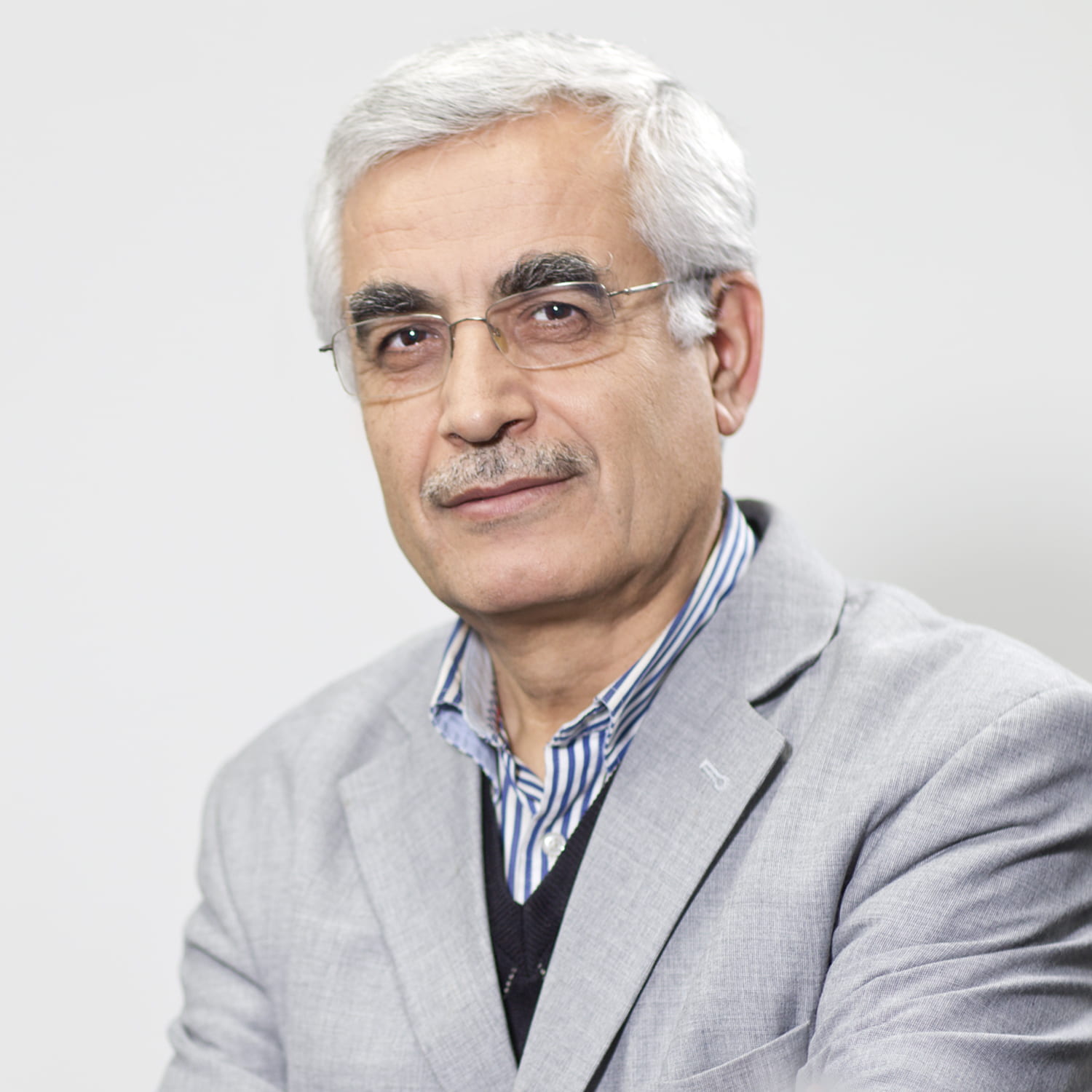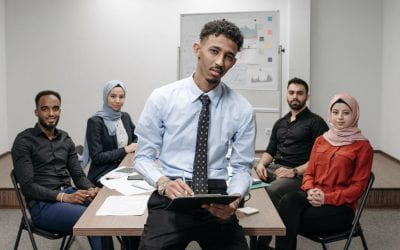Written by Salih Yucel
Latest Articles:
FERHA: A New Approach to Islamic Therapy
Extreme unrealistic fears and disorders of negative imagination (wahm) are often considered as symptoms of jinn possession. Wahm causes harm to the human psyche and is considered a schizophrenic disorder in psychology. This article will elaborate on the approaches to wahm by Ibn Sina (d.1037) and Said Nursi (d.1960) to support the argument that religion can play an important role in reducing fear if used or practised appropriately.
In my chaplaincy work over the last three decades, I combined Ibn Sina’s treatment of recognising fear and Said Nursi’s methodology in reducing fear and anxiety for the treatment of wahm, in what I call a ‘Fear Reducing Holistic Approach (FERHA).’ FERHA empowers clients to discover strengths that can be used against extreme unrealistic fears and disorders of the negative imagination.

FERHA Methodolgy
The FERHA is a spiritually injected rational approach with four stages:
- Building trust with the client.
- Reducing fear and negative feelings through engagement.
- Recognising the negative imagination (wahm) in-depth.
- Discovering unused strengthens for therapy.
It aims to activate the emotional-smart brain by reducing and managing fear and anxiety and engaging the client to discover their potential power and self-awareness [1, 2]. Although it has strengths and weaknesses, it is essential to use the FERHA intervention as complementary, not as an alternative, for positive results.
Ibn Sina’s Body, Mind and Soul Approach
Ibn Sina recognised the value of overcoming fears and using willpower in the therapy of mentally ill people. He discusses the relationship between the five external senses of hearing, sight, smell, taste and touch, and the five internal senses; common sense, retentive imagination, composite estimation, and memory and recollection [3, 4, 5]. To overcome fears, Ibn Sina considers it necessary to connect the body, mind and soul via external and internal senses [4].
Ibn Sina held some sick people get well through sheer willpower, and conversely, some healthy people become so obsessed with the idea of illness that they become physically ill [6]. From this, he concludes that the mind exercises lordship over matter, and has the power to invalidate any negative assumptions.
Although he does not neglect spiritual practice to reduce unrealistic fears, Ibn Sina prefers reason for healing wahm, as judgement made by the aql (mind) is more accurate than those made by estimation [7]. Therefore, he aims to strengthen the aql (mind) by reconnecting the client with their surroundings to discover their fitrah (natural disposition) through rational, emotional and spiritual connections to the universe.
Said Nursi’s Recognising the Fear Approach
For Nursi, humans were created with the capacity of fear and imagination to recognise threats and move to protect and preserve life [8]. As the first source of creativity and invention, imagination should aid human progress. However, some people can misuse the power of imagination, which can exacerbate harmful fears, contribute to mental illnesses, and cause auditory hallucinations.
As such, Nursi argues that the leading cause of unrealistic fear is misusing the imagination as an actual object. Although imagination used actively in daily life helps productivity, problem-solving and furthers innovation, those more sensitive to certain fears are more susceptible to misusing the imagination. As Nursi states, “the most effective medicine for unrealistic fear and wahm is to give it no importance.” [9]
I apply FERHA in light of Ibn Sina’s mind, body and soul approach and Nursi’s methodology of fear reduction.
Case Study – Samy
Samy is a 22-year old Australian-born Muslim whose parents migrated from the Middle East in the mid-70s. Samy’s parents sent him to an Islamic high school in Sydney to raise their children with a Muslim identity. However, the conservative school and its harsh rule enforcement led Samy to dislike both the school and, eventually, his religion. He consequently abandoned his daily prayers, and in his final school year, became doubtful about his faith.
Samy’s rebellion against the Islamic school made him wholly distant from the religion. During his years at TAFE, he felt a spiritual emptiness and sought satisfaction in Buddhist meditations. However, this only caused further harm to his psychological state. At this stage, he showed some strong symptoms of wahm, such as fear, social withdrawal, and hearing voices.
Despite being physically healthy, Samy and his family believed jinns possessed him. It is a widespread assumption among Muslims that jinns can take over the mind, which can be reflected as abnormal or evil behaviours [10]. Because Samy had been using conventional medicine for over two years with no results, his parents looked for alternative medicines.
It was a community event where I met Samy. I wanted to help him with the FERHA therapy voluntarily. My approach was multi-layered, and I worked through the four stages.
Step One: Building Trust
This first step of the FERHA is the hardest and takes time. Building trust is an indispensable attribute of a therapist [11], so, instead of telling Samy that he was sick or possessed by jinns, giving him a list of dos and don’ts, or offering prayers, I tried to be present and actively listen to him to build that trust.
Many of my interactions with Samy were unplanned. For example, I sometimes would give him a lift home after our sessions, and it was here where I shared stories about myself. Gradually, Samy opened up and expressed more details about his problems.
A few times, I shared my lunch with him when he came to my office. This seemed to heal some of the painful feelings caused by the religious authority figures at his school. During our time, I asked Samy to read from a book he liked. After he made an intelligent comment, in a moment of lightness, I asked if he could be my teacher and I, his student. He accepted, and whenever he saw me, he would greet me and say, “How are you, my student?” with a smiling face or chuckle. This showed the level of connection and trust being established, which is different from his relationship with his poor high school experience. Building trust with Samy took more than six months.
Step Two: Reducing Fear & Negative Feelings Through Engagement
Samy’s case was complex, as he illustrated the difficult interactions between beliefs, culture and conventional medicine. I avoided saying anything that could conflict with biomedical treatments or psychotherapy and kept Samy busy so he would not focus on the negative imagination and unrealistic fears. I gave him a supplication by Prophet Muhammad and told him, “Would you read this and I, your student, will repeat it after you?” which he did. This became a habit that we kept even if we did not see each other in my office. Sometimes, he would send me a text reminding me of our daily supplication. This indirect method was just as beneficial as seeing him in person.
In an attempt to keep Samy busy, I encouraged him to continue doing dhikr (remembrance of God), dua, recitation of the Qur’an, worship, reading, and volunteer work. This caused him to think less about his negative imaginings and fears. As Ibn Sina recommends pleasant smells [12], I also gave him some attar of roses, thus allowing him to utilise his five external senses with good things, to form a positive perception in the faculty of his imagination.
I provided a safe space for Samy to express himself freely because we treated him like a normal person.
Step Three: Recognising Negative Imagination (wham)
Ibn Sina’s [4] and Nursi’s [9] approaches are to know in-depth the nature of the client’s extreme unrealistic fears and disorders of negative imagination. In Samy’s case, delusion had become ingrained in his faculty of imagination, although it seemed he was not aware of the groundlessness of his imaginative fear. Due to this, he suffered harm in his heart and mind through imagining his fears to be harmful.
First, Samy focused more on being possessed by jinns, which created fear and prevented him from doing his religious tasks. This initially led to a mild form of hallucination that was transformed to command hallucinations.
Second, misunderstanding or ignorance of religious practices and implantation by force at school confused his psychology.
Third, hearing disembodied voices created fear, anxiety and abnormal behaviour.
Fourth, mishandling of the case by his parents, teachers, and clergy negatively impacted Samy’s faith, which led to mistrust and disassociating himself from practising and later quitting his religion. However, later, he felt emptiness and dissatisfaction.
Fifth, he was dissatisfied with outcomes associated with conventional medicine and inadequate treatment, which he perceived as ineffective.
Finally, the lack of adequate family, community and religious organisation support caused the problem to grow.
Step Four: Discovering Unused or Misused Strength
A well-known Islamic theological framework is that “…God burdens no soul except within its capacity…”(Qur’an 2:285) [13]. All Muslim scholars agree that humans have potential opportunities and sufficient power of patience and endurance to manage challenges. However, many people fail against misfortunes or calamities due to not knowing or using this potential properly.
In Samy’s case, by empowering him, he gradually discovered his potential. Slowly, he was able to identify his blind spots. The most important one was the external aspects of fear, which came from ignorance and assumptions. While he was busy with study, worship, volunteering and homework, Samy realised his strengths. In turn, this gave him the confidence to manage the challenges.
Findings
Applying Ibn Sina’s and Nursi’s approaches assisted Samy in his recovery process. He functioned well as long as he was busy with something. This positive perception of imagination helped him focus less on the fear and anxiety in his mind.
I found that family, clergy and layperson approaches toward jinn increased fear and anxiety in Samy’s mind, which activated his survival/distress system, and generated neural loops. When Samy changed his assumptions about the external aspects of intense fear and negative imagination, he began to function normally.
My limited assistance enabled Samy to recover to a certain extent and gave him some confidence. I could observe that the FERHA methodology contributed to decreasing his levels of unrealistic fear.
Conclusions & Recommendations
A combination of Ibn Sina and Said Nursi’s approaches to schizophrenic disorders in the FERHA therapy creates an alternate and safe space for the client by actively listening and guiding them through questions. The process requires establishing trust, reducing fear and anxiety through engagement, allowing the client to recognise the involuntary negative imagination and empowering the client by discovering unused or misused strengths.
For imams and clergies, a focus should be placed on building trust with the client and their family. Instead of preaching, they should help through actions, with the ultimate goal of minimising fear and anxiety.
Human beings are connected to the spiritual and corporeal worlds and travel between them consciously or subconsciously. Therefore, keeping the client busy and creating a positive impact on the internal sense can lead the client to think less about negative things or hallucinations and promote recovery.
*This article was originally published by Salih Yucel in the Journal of Religion and Health on May 22, 2021. To read the full article, click here.
About the Authors
Salih Yucel has worked as a Muslim Chaplain in NSW Corrective Services in Australia for seven years, and then at Brigham and Women’s Hospital and the Children’s Hospital, both of which are affiliated health institutions of Harvard Medical School in Boston. Currently, he teaches at the Centre for Islamic Studies and Civilisation, Charles Sturt University, and is a part-time lecturer at the Australian Catholic University. He is the author of four books, co-author of one book, and a number of articles and book chapters.
Click here for more detail.






I really like the FERHA approach, and I would like to thank Mr. Yucel for showing us this aspect of our religion to heal our souls. This article came when we needed most!
wow amazing